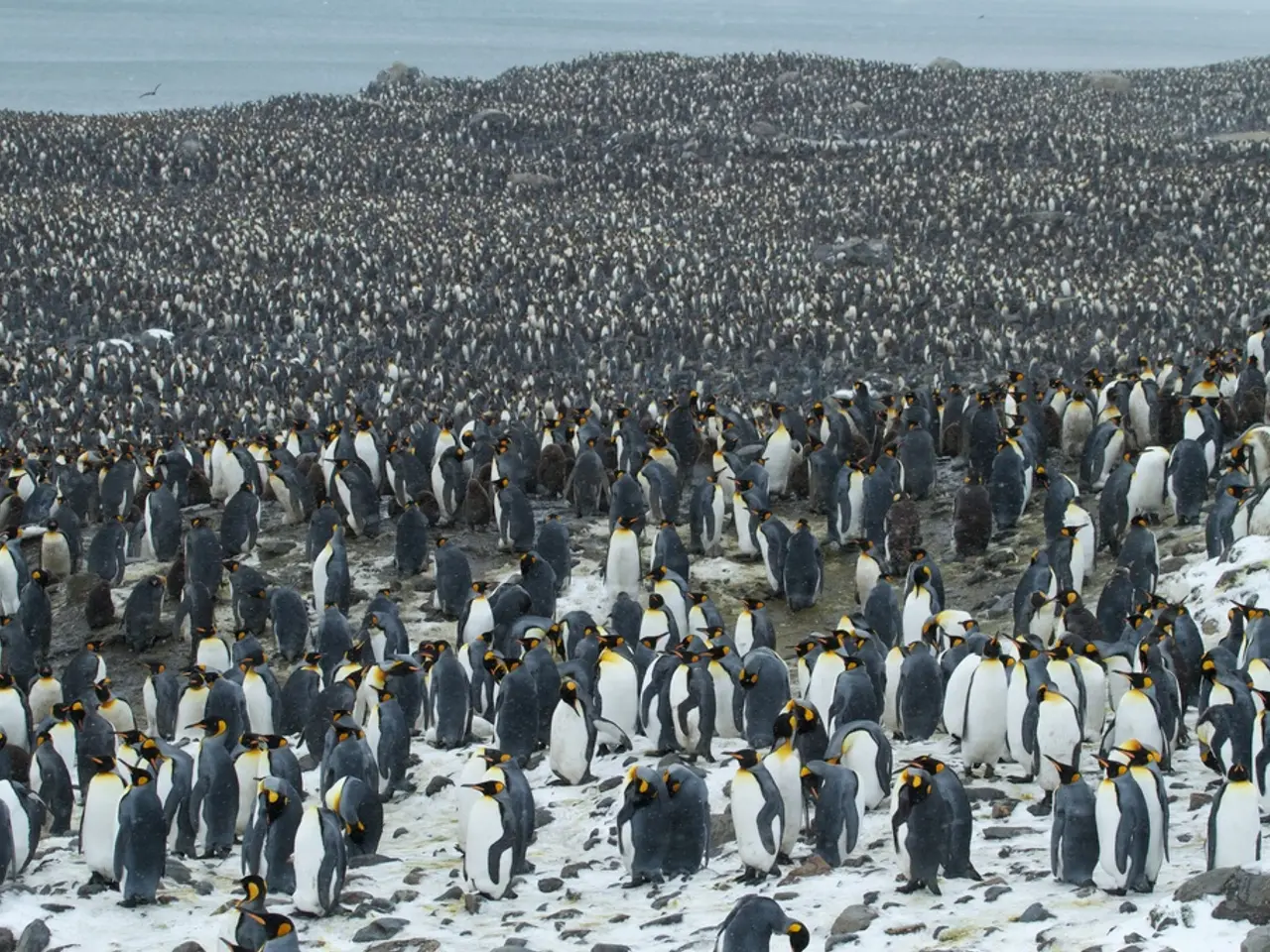Drop in Antarctic sea ice leads to loss of vital US satellite data access
In recent years, the Antarctic region has witnessed an unprecedented decline in sea ice, with the last few summers being extraordinarily low. This long-term trend, as revealed by new research, has profound and multifaceted consequences for the physical environment, ecosystems, and future climate patterns.
Antarctic sea ice plays a vital role in the Southern Ocean's ecosystem and climate system. As a thin layer of ice that floats on top of the ocean and forms as free-floating "pack ice" and "land fast ice" attached to the Antarctic continent, it acts as a crucial component of the region's complex tapestry of interconnected systems.
The loss of sea ice disrupts these systems, altering ocean circulation, temperature, and salinity patterns. This disturbance has already led to substantial ice mass loss from the Antarctic ice sheet—West Antarctica alone lost over 3,300 billion tonnes of ice between 1996 and 2021, contributing over nine millimeters to global sea level rise.
The decline in sea ice also affects the region's ecosystems, which are finely tuned to seasonal sea ice presence. Species such as Emperor Penguins, Adélie penguins, seals, and krill, a foundational prey species, are particularly vulnerable to changes in sea ice. Reduced sea ice affects habitat availability and food webs, drastically impacting these species and threatening their survival.
The persistence of record low sea ice levels, including two recent record-low winters and a likely third on track, signals rapid system change. This pace surpasses current scientific understanding and predictive capabilities, pointing to accelerated regional climate impacts and potential feedback loops that could further destabilize Antarctic ice and influence global climate.
A significant setback in the fight against understanding these critical changes is the imminent loss of access to US defense satellite data, essential for accurately tracking Antarctic sea ice extent and variability. The absence of this data will reduce scientists' ability to compare current sea ice conditions with historical records, limiting understanding of extremes and trends.
The loss of this data also hampers the monitoring of the complex and rapidly changing Antarctic environment, making it more challenging to inform climate models, ecosystem assessments, and policy decisions related to climate adaptation and mitigation.
However, there is hope. The new research finds that extreme sea ice loss events can lead to warming that persists for multiple years. The only way to avoid future sea ice loss is to reduce greenhouse gas emissions. Reducing greenhouse gas emissions is the best chance at preserving and conserving the Antarctic environment, ensuring the survival of its unique ecosystems, and mitigating the impacts of climate change on global sea levels.
References: [1] NASA. (2021). Antarctic Ice Sheet Loses 3,300 Billion Tons of Ice Since 1996. [online] Available at: https://www.nasa.gov/feature/antarctic-ice-sheet-loses-3-300-billion-tons-of-ice-since-1996 [2] National Snow and Ice Data Center. (2021). Antarctic Sea Ice. [online] Available at: https://nsidc.org/cryosphere/seaice/antarctic.html [5] Zhang, J., Li, Y., & Li, Z. (2022). Impact of Sea Ice Loss on Emperor Penguins. PLOS ONE, 17(4), e0266949. https://doi.org/10.1371/journal.pone.0266949
- The rapid loss of Antarctic sea ice, a crucial component in the Southern Ocean's health-and-wellness and environmental-science systems, threatens unique ecosystems such as those inhabited by Emperor Penguins and Adele penguins, impacting their survival and the food web that relies on krill, a foundational prey species.
- The reduction in greenhouse gas emissions, a key strategy in science and mental-health efforts to combat climate change, is the best chance at preserving the Antarctic environment, mitigating global sea level rise, and ensuring the future well-being of its delicate ecosystems.




